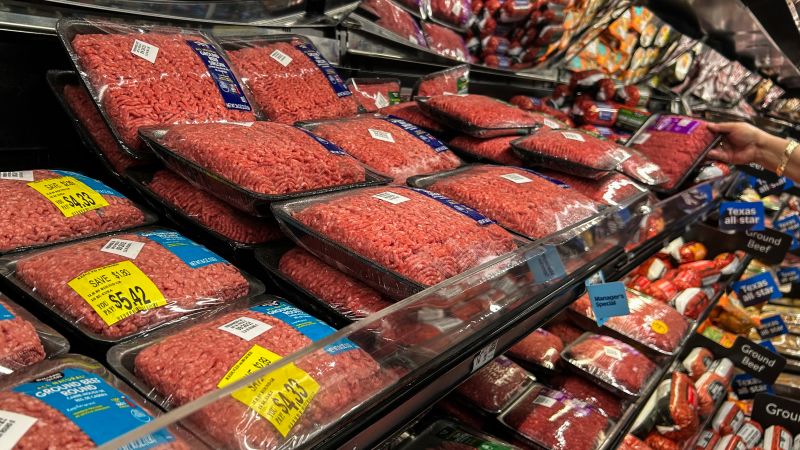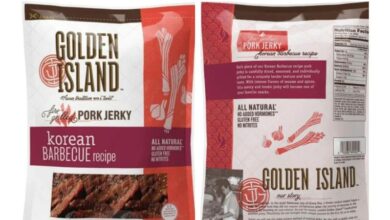What became more expensive in September

Here’s a look at what’s become more expensive in September Consumer Price Index report – as well as a few key areas where consumers are seeing relief.
But first, a caveat: Monthly data can be quite volatile – and it could be even more volatile due to federal cuts and BLS staffing limitations that have impacted how data is collected – so it’s important to look at longer-term trends.
Food prices soared in August, increasing 0.6%, the highest level in almost three years; however, in September they increased at a relatively modest 0.3%. For the year, they are below overall inflation, at a rate of 2.7%, according to BLS data.
The dairy products affair helps to curb the overall inflation of home food: egg prices fell after the bird flu issues have been resolvedand abundant production and supply of milk, butter and edible oils kept the price rise in check.
The same can’t be said for other aisles in the grocery store.
Beef and veal: In September, prices for uncooked roast beef increased 4.8%, their largest increase in four years. The expanded beef and veal index increased 1.2% in September and 14.7% from a year earlier.
In recent months, the average price of beef has reached record levels, a milestone driven by a trend that has been going on for years drought, dwindling herds and increased beef imports.
Lunch meats: The beef trend doesn’t bode well here. Prices for convenient sandwich fillings increased 4.2%, the largest ever for the category.
Fresh rolls, coffee cakes, donuts: Cue the “d’oh” from the crowd of donut lovers. In September, prices for these delicious baked goods increased by 5.7%. This is the highest monthly increase for this category in more than 26 years.
This is likely part of a lagged effect of past price increases in key ingredients (like eggs, wheat, spices and sugar) and part of post-pandemic changes in consumer demand and labor patterns, BLS researchers noted earlier this year when analyzing prices of baked goods.
Coffee: America’s favorite caffeinated beverage actually became cheaper in September: that index fell 0.1%. But here’s where the monthly caveat comes in: September’s slight decline comes after seven straight months of price increases ranging from 0.9% to 3.6%.
Over the year, coffee prices increased by 18.9%. It’s even worse if you like the quick fix: That’s an increase of 21.7%, the highest annual inflation since the summer of 1995. And it’s very possible that it won’t stop there if President Donald Trump follows through on his threat to impose higher tariffs on Colombian shipments. Brazil, the main coffee exporter, also faces a 50% tax.
Home care for elderly and disabled people: Prices here climbed 7% in September, marking the largest monthly increase on record for this category (which the BLS began tracking in December 2005). On an annual basis, they are up 11.6%.
Health care costs are rising, and this is especially true for the care economy, where providers are facing funding gaps (which were exacerbated by further budget cuts). This contributed to low wages, which led to labor shortages (now exacerbated by immigration cuts), which in turn led to healthcare deserts, putting additional pressure on prices – and, in turn, negative labor market outcomes.
Admission to sporting events: The start of the football season had an even heavier impact on the portfolio. The price of fandom increased 3.7% from August, according to BLS data, which takes seasonality into account.
On an annual basis, tickets to sporting events are down about 6.9%; however, this category could highlight a “K-shaped” trend that influences prices.
“Consumers at the higher end of the income scale still spend relatively freely on discretionary services, putting upward pressure on airfares and hotel prices” and other related categories, said Gregory Daco, chief economist at EY-Parthenon.
Air fares: Ticket prices rose 2.7% on a monthly basis, pushing the annual rate to 3.2%.
Trump’s substantial and widespread tariffs are having an effect on overall inflation, but instead of a surge, the pass-through to consumers has been continuous, progressive and uneven (for a multitude of reasons).
This is a slow hemorrhage that is expected to continue until early next year, but some impacts are already being felt.
“The grocery segment, of course, is one of the major ones,” Daco said. “Yes, we produce fruits and vegetables and meat, but we also import a lot of produce and other items that are in our grocery stores. »
It is therefore logical that products like bananas (+6.9% per year), canned fruits and vegetables (+5%) and sugar and sweets (+6.7%) are experiencing their fastest annual growth in years.
Customs duties also appear on other non-food products which saw notable price increases in September:
Watches: Monthly price changes in this category can be quite volatile; however, the trend in recent years – as with many other goods – has generally been one of falling prices. This was not the case in August, when watch prices rose 1.9%, nor in September, where they rose 3.2%, bringing the annual rate to 6.6%.
In August, the United States imposed a 39% tariff on Switzerland, which is one of the leading exporters of watches to America.
Clothing for boys: The back-to-school shopping season saw plenty of shocks in August, and that continued into September. This category increased 2.6%, the largest monthly increase in over a year.
Many clothing and accessories are manufactured outside of the United States, in countries like Bangladesh, China, India and Vietnam. leaving them heavily exposed to customs duties.
Furniture and appliances: Inflation in housing-related services, which represents the largest weight in the CPI, slowed further in September. But this is certainly not the case for the prices of the goods that fill homes.
“Other furniture,” which can include desks, bookcases and more, saw its prices increase by 1.9%, the most in almost two years and is at its highest annual inflation rate in almost three years. The situation is similar for household appliances, which are up 1.3% compared to the previous year (after an increase of 0.8% in September).
In recent months, Trump has extended tariffs to household appliances and is committed to promulgating Even more “substantial” prices on furniture.
ـــــــــــــــــــــــــــــــــــــــــــــــــــــــــــــــــــــــــــــــــــــــــــــــــــــــــــــــــ
Soon, there will be articles covering various topics, such as:
Insurance, Loans, Mortgage, Attorney, Credit, Lawyer, Donate, Degree, Hosting, Claim, Conference Call, Trading, Software, Recovery, Transfer, Gas/Electicity, Classes, Rehab, Treatment, Cord Blood, Best mesothelioma lawyer, Truck accident lawyer, Buy life insurance online, Business VoIP provider, EMR software for clinics, Structured settlement companies, motorcycle injury lawyer, motorcycle injury attorney, spinal cord injury attorney, birth injury attorney, auto accident injury attorney, spinal cord injury lawyer, car injury attorney, motorcycle accident injury attorney, catastrophic injury lawyer, birth injury lawyer, workplace injury attorney, motorcycle injury attorneys, head injury lawyer, personal injury attorneys, traumatic brain injury attorney, train accident lawyer, brain injury attorney, auto injury attorney, serious injury attorney, personal injury lawyer, truck injury lawyer, injury attorneys, back injury lawyer, injury lawyer near me, injury lawyer,
If you would like to see these articles, please write so in the comments.




